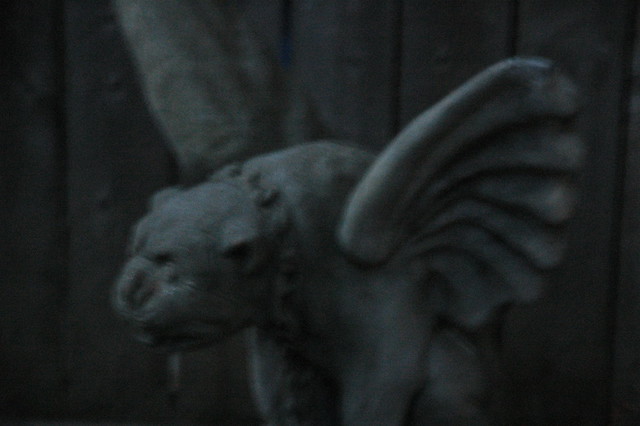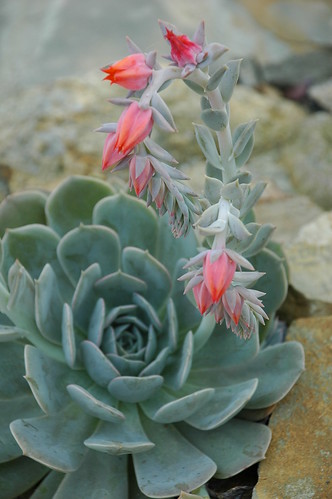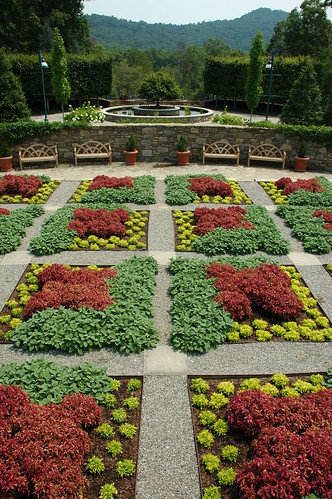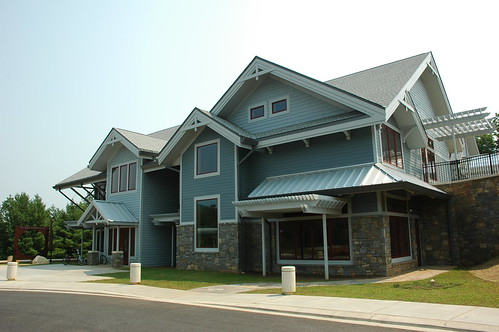Update 2007.11.20: Added clarification that cobblestones will not be marked. Added link to related posts, including the announcement page.
Update, September 28: The Gardeners for Recovery Cobblestone Campaign is online.
What is to give light must endure burning.
– Victor Frankl, survivor of the Nazi holocaust.
Tribute in Light, shot blindly out the window of a moving cab in downtown Manhattan earlier this evening, the 6th anniversary of the attacks.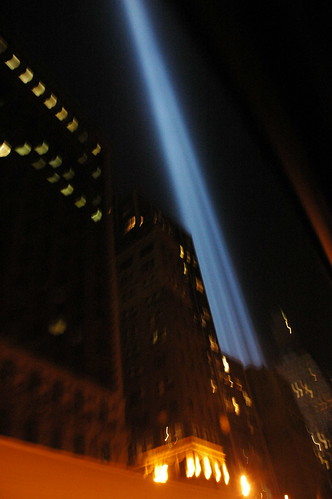
I’ve written several posts so far comprising an irregular series related to the symbiotic practices of gardening and grieving:
- 1, 5 and 25
- Five Years After, “Ths Transetorey Life”
- Nihilism and Squirrels
- The Death of Takeo Shiota
- The Daffodil Project
- The IPCC Report
- The Garden of Memory
- In the Shadow
What I’ve not written about so well is what follows – what accompanies and emerges from – grief.
40 years ago Dr. Elisabeth Kübler-Ross described a model of grieving outlining five stages or phases:
- Denial
- Anger
- Bargaining
- Depression
- Acceptance
This is not the only model possible or available. However, it’s the one with which I’m most familiar, and I find it useful as a framework to describe, and therefore help me recognize and understand, grieving as it occurs naturally in me and around me.
Because it’s so familiar, this model has been often misapplied and misinterpreted, narrowed and stretched, until it has lost much of its depth and richness. There are some useful extensions and adaptations, intended to restore the balance, such as this one:
Grieving only begins where the 5 Stages of “Grief” leave off. Grief professionals often use the concept of “Grief Work” to help the bereaved through grief resolution. One common definition of Grief Work is summarized by the acronym TEAR:
T = To accept the reality of the loss
E = Experience the pain of the loss
A = Adjust to the new environment without the lost object
R = Reinvest in the new reality
There is another vocabulary, another language, which can provide a frame for understanding and exploring all these stages. That is the language of recovery.
In 1999, I joined the steering committee of a group called SpeakOUT! Lesbian, Gay, Bisexual and Transgender Voices for Recovery. It was funded by a grant from the U.S. Center for Substance Abuse Treatment (CSAT); however, from early on we defined recovery broadly and inclusively. Though the group itself is now defunct, I learned a lot from my involvement with it, and there were some deep lessons. Our vision statement was:
Our vision is of a world that honors the journeys of recovery within all diverse lesbian, gay, bisexual and transgender and other communities, supports all forms of recovery, and celebrates the growth of the human spirit.
This statement can still give me chills. We did not say that our vision was of a world free from chemical dependence. Or injury, pain, or loss. Instead we dreamt of a world which embraced recovery. We were not anti-drug. We were pro-recovery. There is a strong Zen/Buddhist leaning in this: Pain is inevitable. A world without pain, without loss, would be a world without life. Suffering is something we bring into the world, to others, to ourselves. The purpose of life is to relieve suffering.
The “forms of recovery” was a rich area of exploration. What did we even mean by “recovery”? How could we define it in a way that was compelling, flexible, and meaningful? I’m proud to say that then not-yet-blog-widow John formulated it this way:
Recovery is anything which manifests a desire to live.
Or, in my simplified formation:
Recovery chooses life.
In the U.S., September is National Recovery Month. Six years ago, we were planning a community forum to observe the month. Then the unthinkable happened. Like many other organizations, we questioned whether or not we should go ahead with our scheduled events after September 11, and if so, whether and how we should modify them. We decided to proceed, in part because the theme of Recovery Month was “We Recover Together: Friends, Family and Community” and in part because we knew the need people felt to come together.
Something remarkable happened to New York City at that time. As I spoke at the forum that month, and wrote up later for our newsletter:
Since September 11, 2001, everyone in New York City is talking about
“recovery,” many for the first time. What does it mean to be living in a
whole city that’s in recovery? As a person in recovery, what can I bring
to my colleagues, neighbors, and communities? What can I learn from
community responses to recovery needs? I’ve observed in myself how
my previous experiences have helped me cope with my reactions. …At all times, and especially now in New York City, people in recovery
have much to offer our loved ones, neighbors and communities. We
know what it’s like to be powerless, to feel hopeless. We know that
healing is possible. We know the healing power of community. We
know the rewards of giving back. We know the gifts of recovery.
I believe that gardeners know this, too. It’s manifest in defiant gardens of all types. It’s manifest in vacant lots transformed by communities into oases. It’s manifest in horticultural therapy. It’s manifest in living memorials.
I’ve submitted a proposal to the National September 11 Memorial and Museum to sponsor a paver for the memorial plaza through a campaign for contributions. The name of the campaign is the title of this post: Gardeners for Recovery. Out of respect for the victims of September 11, cobblestones will not be inscribed with donor names or any other markings. When the Memorial is completed, we will be able to identify the exact location of our cobblestone by using a kiosk on the Memorial Plaza. See the announcement post for information about how to contribute.
I still dream of a world which embraces recovery in all its forms, gardening among them. For this National Recovery Month, and on this somber day, I invite you to find your own ways to celebrate recovery, to celebrate life.
PS: This is the 400th post on this blog.
[bit.ly]
Related Posts
Gardeners for Recovery is on its way!, November 13
Announcing the Gardeners for Recovery Cobblestone Campaign, September 28

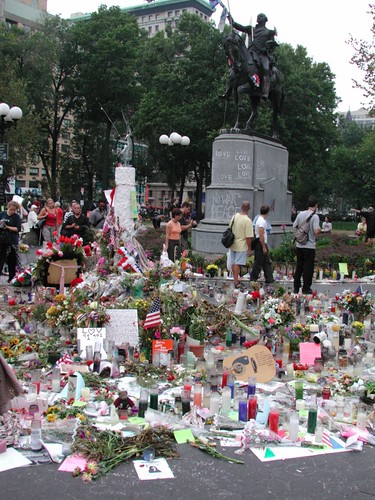
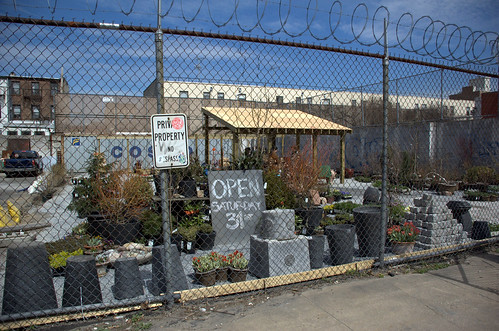


 1 & 2 Family Residential
1 & 2 Family Residential Multi-family Residential (3 or more Residential Units)
Multi-family Residential (3 or more Residential Units) Mixed Use (Residential and Commercial)
Mixed Use (Residential and Commercial) Commercial
Commercial Institutions
Institutions Transportation & Parking
Transportation & Parking Industrial (corresponds to Zoning’s “Manufacturing” designation)
Industrial (corresponds to Zoning’s “Manufacturing” designation) Vacant Lots
Vacant Lots